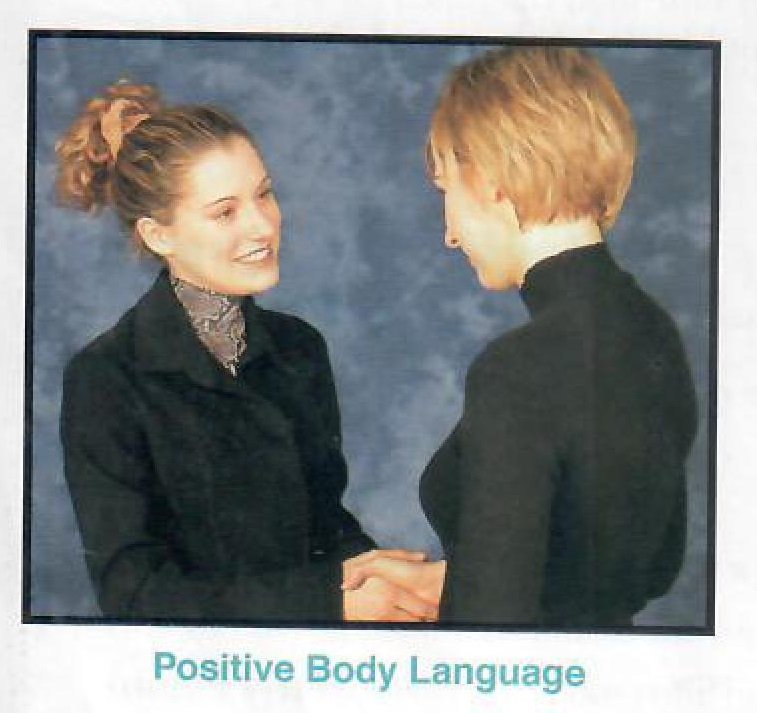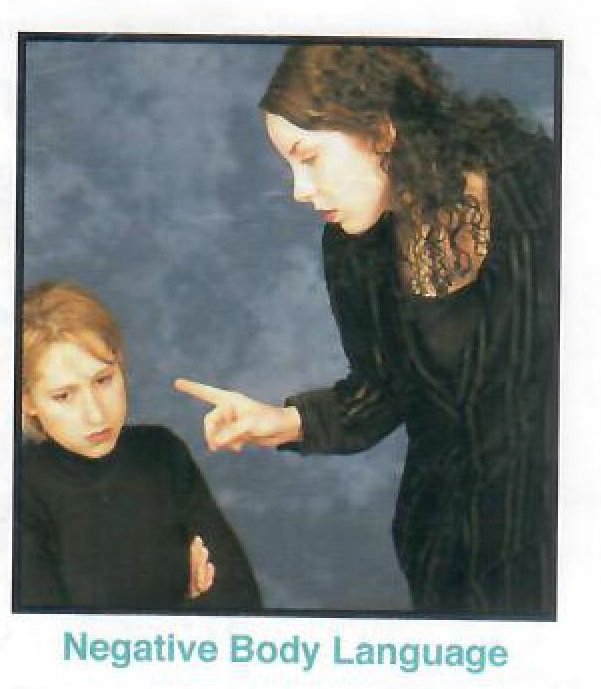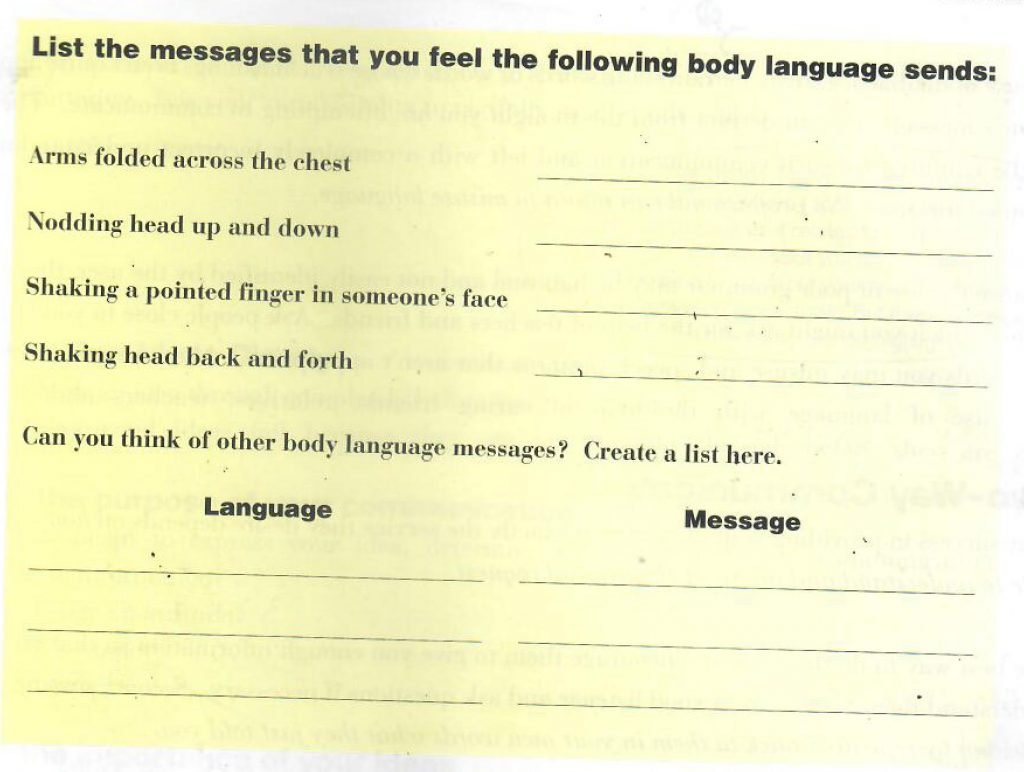Nonverbal Communication (Body Language)
In nonverbal communication (sometimes called * ‘Body Language”), messages are exchanged without speaking. Appearance, posture, poise. touch, facial expression, eye contact. gestures and silence often “speak more loudly than words.”

For example, a smile is a universal sign of approval. Another example, one who stands straight. shoulders squared. head held high and extends a hand to greet communicates self-confidence. Bowed shoulders and sloping body posture convey uncertainty.
Eye contact tells your client – or anyone with whom you are talking – that he or she has your full attention. There will be times. even in the middle of styling a client’s hair, that the importance of what that client is saying should cue you to pause and make eye contact. Simple eye contact can validate and reassure. It is a universal sign of acknowledgment.

In preliminary client consultations – or on any occasion when you’re communicating face-to-face — leaning slightly forward conveys the unspoken message that the speaker has your complete attention and intense interest. A slightly forward lean communicates that you are interested in what is being said. A backward lean is an unspoken message that you are doubtful or uninterested,
Become aware of the subtle ways posture can communicate your feelings about yourself and those around you. Be sure your posture conveys confidence and your movements indicate interest in what your client is saying.

